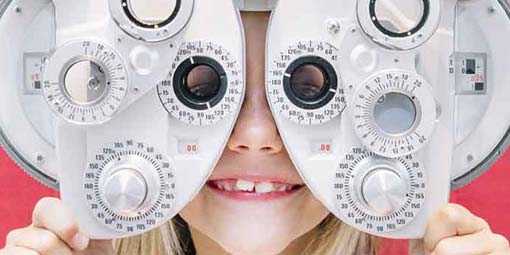Ocular Surface Disease - Symptoms, Causes and Treatment
07-04-2024
What is Ocular Surface Disease?
Ocular Surface Disease, also known as OSD, is a condition that affects the surface of the eye, including the cornea and conjunctiva. This disease can cause discomfort and irritation, leading to symptoms such as dryness, redness, and a gritty feeling in the eyes. Proper management of OSD is important to maintain eye health and comfort for those affected by the condition.What Are The Causes Of Ocular Surface Disease?
Ocular Surface Disease can be caused by a variety of factors, including environmental conditions such as dry or windy weather, as well as prolonged exposure to screens and digital devices that can lead to dry eyes. Additionally, certain medications, contact lens wear, and underlying health conditions such as autoimmune diseases can also contribute to the development of Ocular Surface Disease. In some cases, inadequate tear production or poor tear quality can play a role in the onset of this condition. Proper diagnosis and management by an optometrist are essential in addressing the underlying causes of Ocular Surface Disease and providing relief for patients experiencing symptoms.What Are The Risk Factors For Ocular Surface Disease?
There are several risk factors for Ocular Surface Disease that individuals should be aware of. These include advanced age, certain medical conditions such as autoimmune diseases, environmental factors like smoke or dry air, prolonged use of digital devices, contact lens wear, and certain medications. It is important for individuals with these risk factors to be vigilant about their eye health and seek regular eye exams to monitor for any signs of Ocular Surface Disease. By being proactive and taking steps to protect their eye health, individuals can help reduce their risk of developing this condition.What Are The Symptoms Of Ocular Surface Disease?
Symptoms of Ocular Surface Disease can vary from person to person, but common signs include dryness, redness, irritation, burning, itching, and a gritty sensation in the eyes. Some individuals may also experience excessive tearing, sensitivity to light, blurred vision, and discomfort when wearing contact lenses. In more severe cases, Ocular Surface Disease can lead to corneal damage and vision problems if left untreated. It is important to seek professional help if you are experiencing any of these symptoms to prevent further complications and discomfort.How is Ocular Surface Disease Diagnosed?
Ocular Surface Disease is diagnosed through a comprehensive eye examination by an optometrist or ophthalmologist. During the examination, the doctor will evaluate the patient's medical history, symptoms, and perform various tests to assess the condition of the ocular surface. These tests may include a visual acuity test, slit-lamp examination, tear film evaluation, and measurement of tear production. Additionally, the doctor may use special dyes to assess the health of the cornea and conjunctiva, as well as evaluate the quality and quantity of tears produced by the eyes. Based on the findings from these tests, the doctor can make a diagnosis of Ocular Surface Disease and recommend appropriate treatment options.How is Ocular Surface Disease Treated?
Ocular Surface Disease can be treated through a variety of methods depending on the severity of the condition. One common treatment option is the use of artificial tears or lubricating eye drops to help keep the eyes moist and reduce irritation. In more severe cases, prescription medications such as anti-inflammatory eye drops or steroids may be prescribed to help reduce inflammation and improve symptoms. In some cases, procedures such as punctal plugs or meibomian gland expression may be recommended to help improve tear production and quality. It is important for individuals with Ocular Surface Disease to work closely with their optometrist to determine the best treatment plan for their specific needs.Is There A Cure For Ocular Surface Disease?
Unfortunately, there is currently no cure for Ocular Surface Disease. However, there are various treatment options available that can help manage the symptoms and improve the overall health of the ocular surface. These treatments may include prescription eye drops, lifestyle changes, and in some cases, surgical interventions. It is important for patients with Ocular Surface Disease to work closely with their eye care provider to develop a personalized treatment plan that meets their individual needs and helps to alleviate their symptoms.How Can Ocular Surface Disease Be Prevented?
Ocular Surface Disease can be prevented by taking proactive measures to maintain the health of the eyes. This includes practicing good hygiene by washing hands regularly and avoiding touching or rubbing the eyes unnecessarily. Using protective eyewear such as sunglasses can help shield the eyes from harmful UV rays and environmental irritants. Staying hydrated by drinking plenty of water and incorporating omega-3 fatty acids into the diet can also promote eye health. Additionally, taking regular breaks from screens and ensuring proper lighting in workspaces can help reduce eye strain and dryness. Regular eye exams with an optometrist can also help catch any potential issues early on and prevent the progression of Ocular Surface Disease. Schedule An Appointment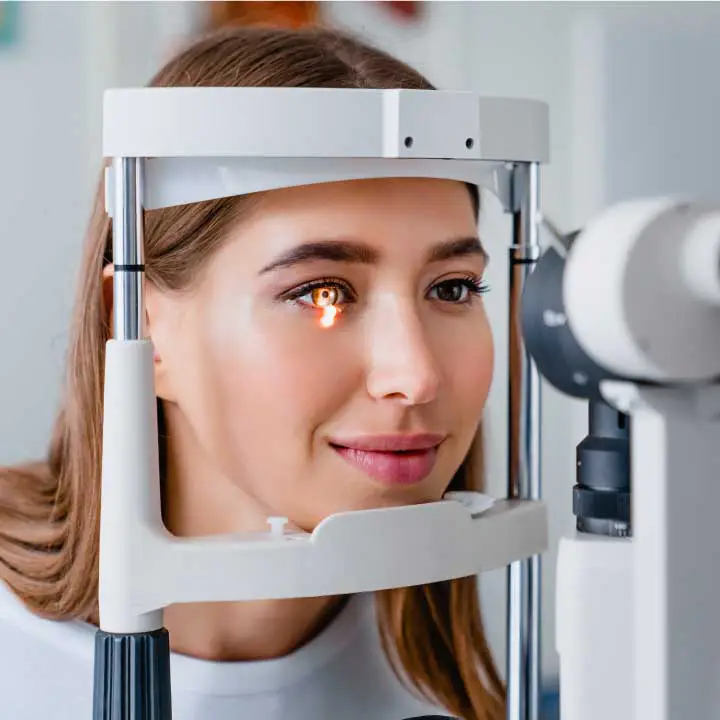
Adult Eye Exams
Our advanced eye exams consist of 25+ modern tests and digital scans to assess eye health, function, and visual acuity.

Child Eye Exams
Give your child a clear future with an annual eye exam from our experienced Edmonton optometrists.

Senior Eye Exams
Maintain your vision through your golden years with gold standard eye care from the optometrists at our Edmonton eye clinic.
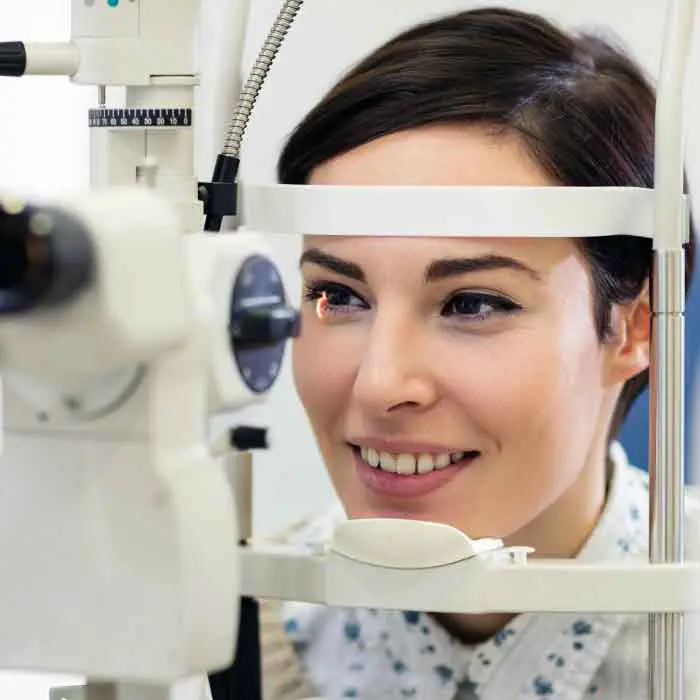
Contact Lens Eye Exams
Our eye exams for contact lens wearers include test and digital scans to assess eye health, function, visual acuity, and lens fit.
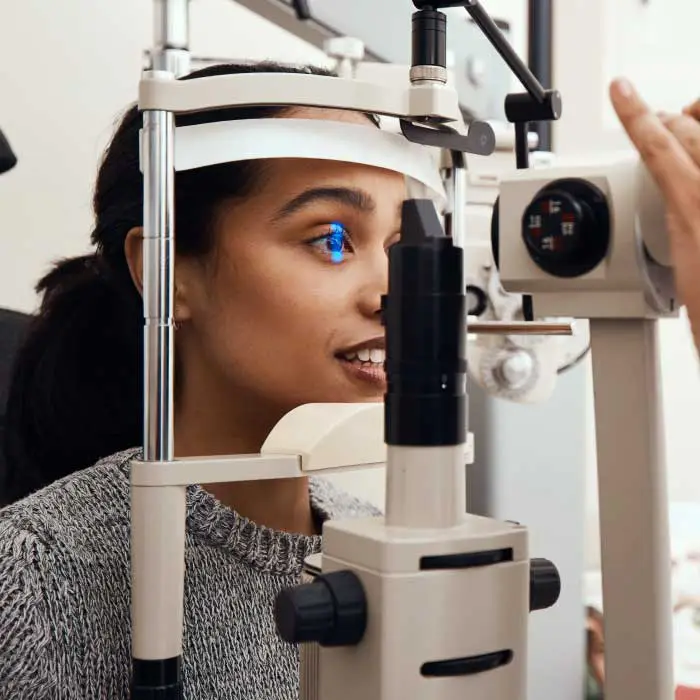
Diabetic Eye Exams
Managing diabetes requires regular eye exams to ensure that diabetes is not causing irreversible vision loss.
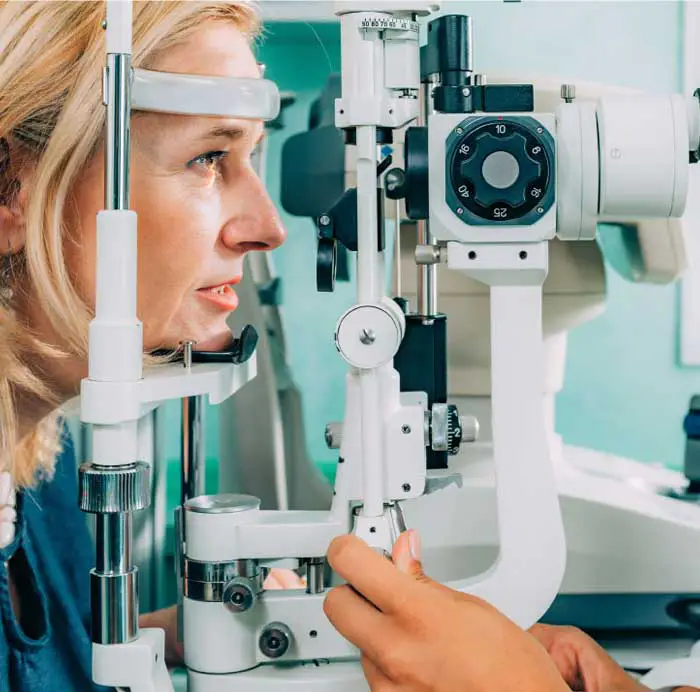
Dilated Eye Exams
Dilating the eyes enables our Edmonton optometrists to see more of the eye so that you many never see less.
Our Edmonton Eye Exams Are Comprised Of 4 Phases Of Evaluation
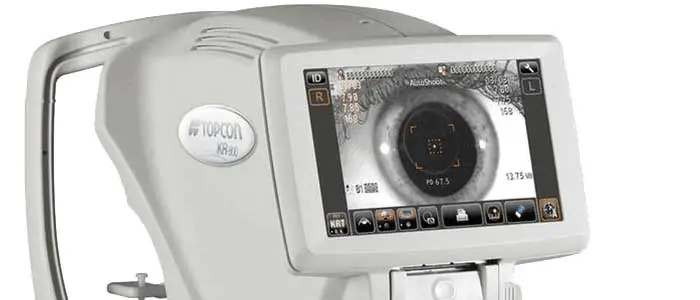
1. Eye Exam Pre-Testing
Corneal Thickness | Intraocular Pressures | Visual Field
Pre-testing is a detailed process that gathers all necessary information for the optometrist in advance of the optometrist-administered eye examination. This process involves completing a detailed patient history, as well as a series of standard tests. Pre-testing is an essential part of the comprehensive eye exam process, providing valuable information and visuals for both the optometrist and the patient.
More About Pre-Testing »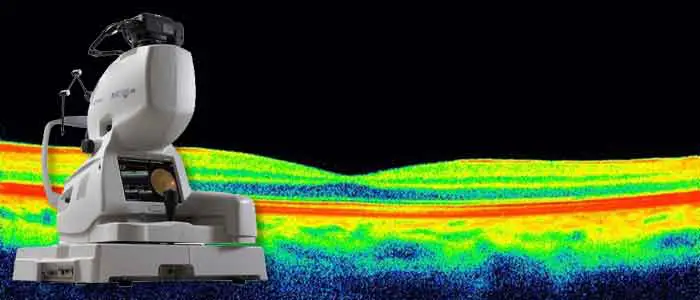
2. Advanced Diagnostic Testing
Retinal Photography, OCT, Topography
eye-deology Vision Care differentiates itself from other clinics by having the most advanced modern diagnostic specialty testing equipment. Specialty equipment, such as a wide-angle high-resolution retinal imager, Optical Coherence Tomography (OCT), Humphrey Visual Field Analyzer and corneal topographer, ensures that patients receive the best comprehensive eye care.
More About Advanced Testing »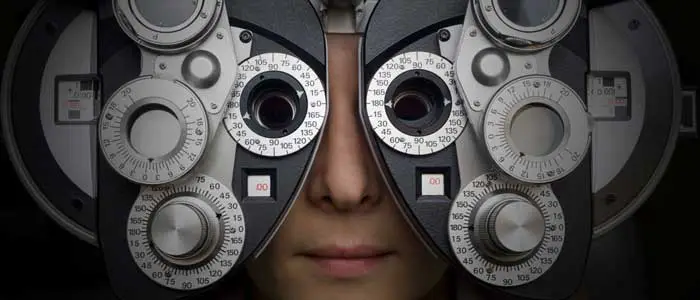
3. Optometrist Examination
Health Assessment & Disease Diagnosis
eye-deology Vision Care Edmonton optometrists perform a multitude of tests and assessments to evaluate ocular health, eye coordination, and visual acuity. In addition, they also evaluate the results of the tests and scans performed during pre-testing. As part of patient education, our optometrists also take the time to show and explain results to patients.
More About Doctor Exam »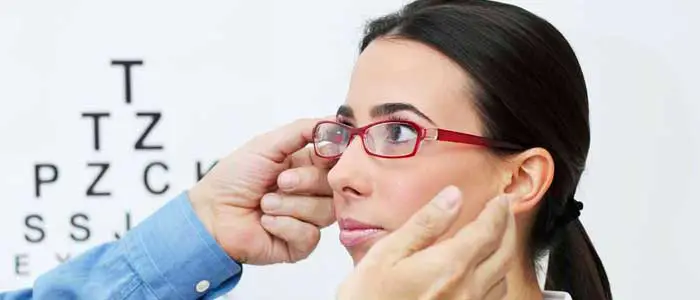
4. Eye Glass Consult
Prescription | Lens Selection | Digital Fitting
If you require corrective lenses to improve your vision, our licensed opticians will customize their fit to your unique attributes, needs, lifestyle, and budget. Our opticians are happy to provide you with information about the latest eyeglass frame and lens technologies available so you can make informed decisions and begin seeing and looking your best.
More About Eyewear Consult »